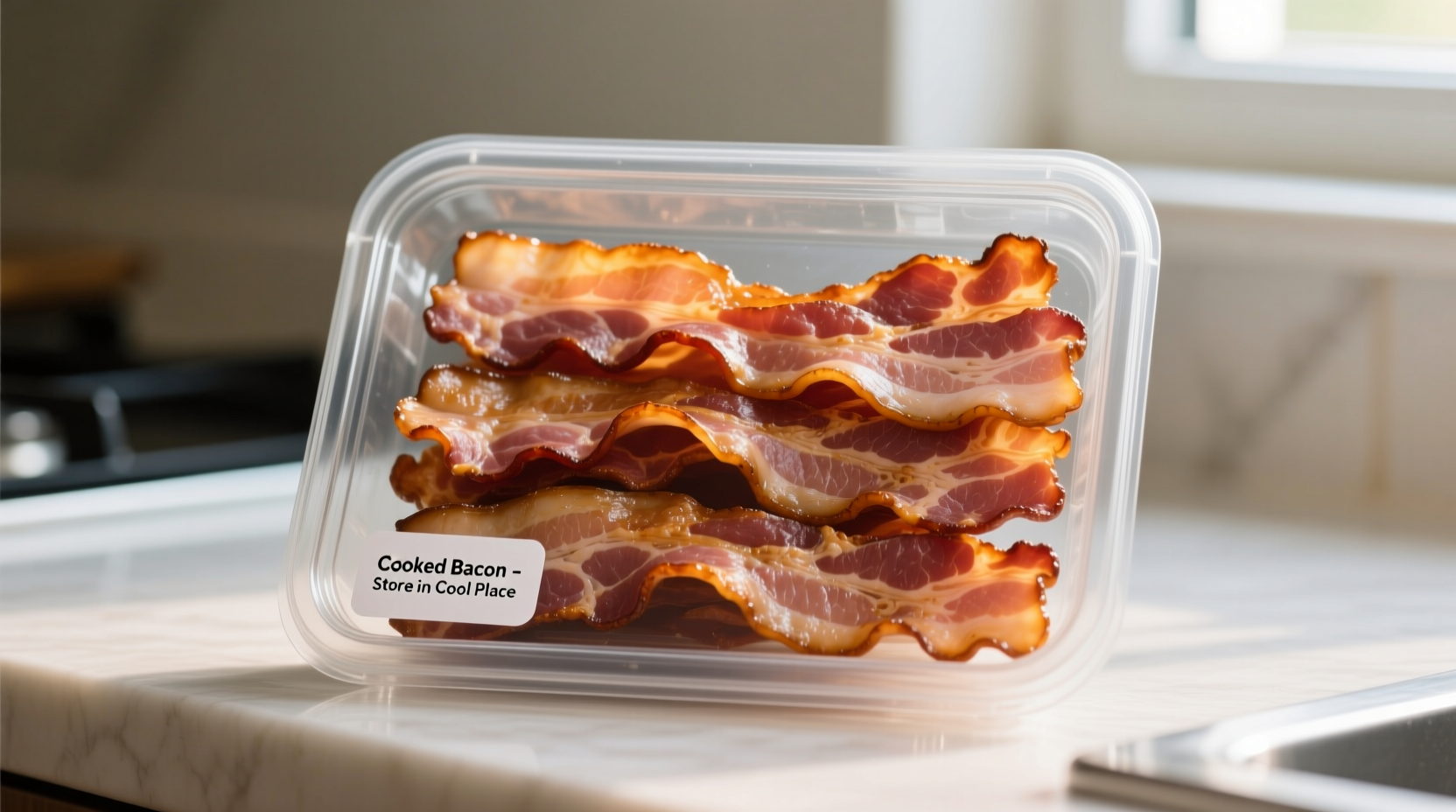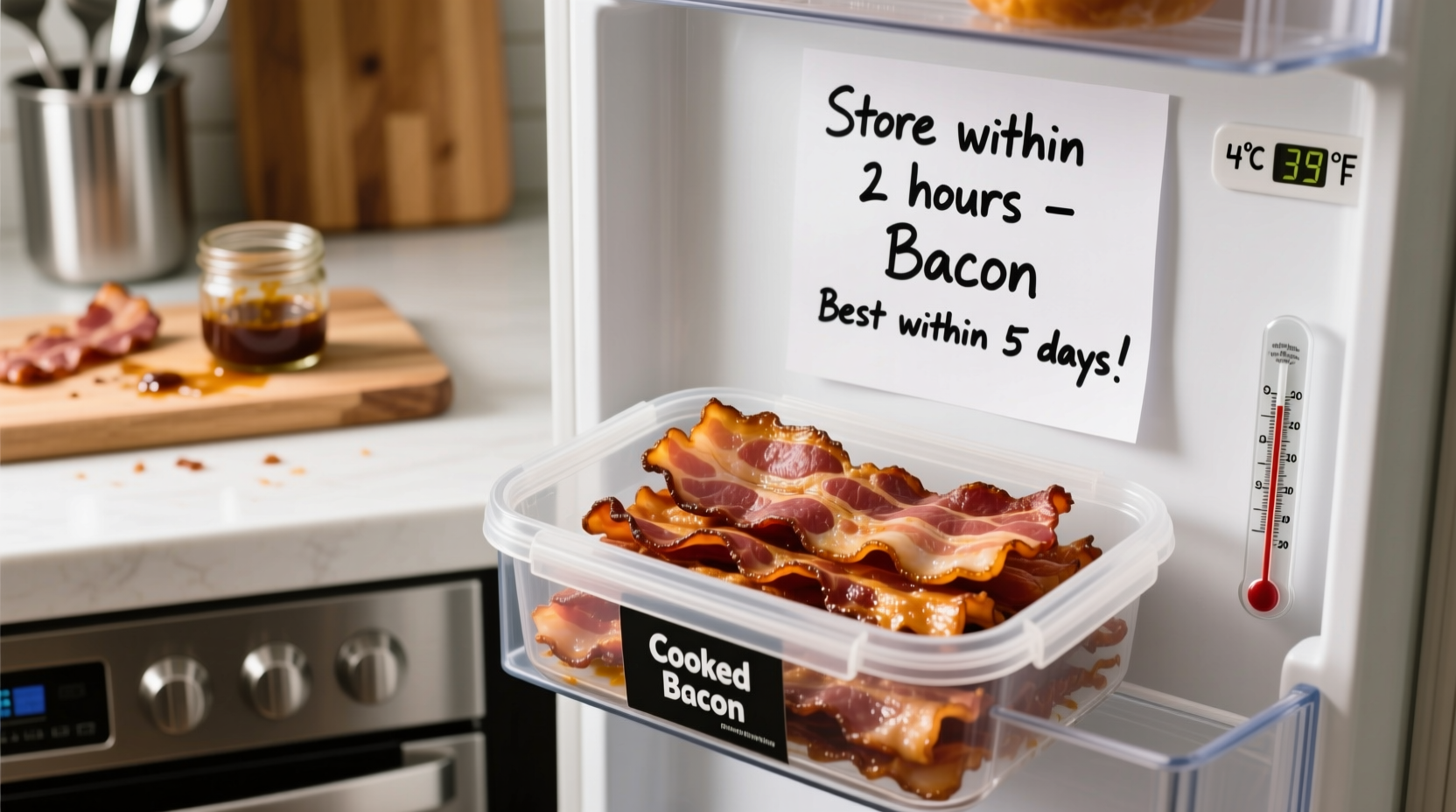Store cooked bacon properly by cooling it completely, then placing it in an airtight container or heavy-duty freezer bag with minimal air. Refrigerate for up to 5 days or freeze for up to 4 months. For best results, separate slices with parchment paper before storing and always label with date.
Discover exactly how to store cooked bacon to maintain its crispy texture and rich flavor while ensuring food safety. Whether you've cooked a large batch for meal prep or have leftovers from breakfast, proper storage techniques can extend your bacon's shelf life while preserving quality. This guide provides evidence-based methods tested by culinary professionals and food safety experts.
The Science Behind Bacon Storage
Understanding why proper storage matters begins with bacon's composition. Cooked bacon contains rendered fat and reduced moisture content, creating ideal conditions for oxidation and bacterial growth if not stored correctly. According to USDA Food Safety and Inspection Service guidelines, cooked meats like bacon should be cooled to room temperature within two hours before refrigeration to prevent condensation that accelerates spoilage.
| Storage Method | Maximum Duration | Quality Preservation | Best For |
|---|---|---|---|
| Refrigerator (airtight container) | 4-5 days | ★★★★☆ | Short-term use |
| Freezer (vacuum-sealed) | 3-4 months | ★★★★★ | Long-term storage |
| Freezer (regular freezer bag) | 1-2 months | ★★★☆☆ | Budget-friendly option |
| Room temperature | 2 hours max | ★☆☆☆☆ | Never recommended |
Step-by-Step Storage Process
Follow these professional techniques to maximize your cooked bacon's shelf life while maintaining optimal quality:
Cooling Properly Before Storage
Never store hot bacon directly in containers. Lay cooked strips in a single layer on a wire rack for 10-15 minutes until they reach room temperature. This prevents steam buildup that creates moisture inside storage containers. Food safety experts at the FDA emphasize that rapid cooling prevents the "danger zone" temperature range (40°F-140°F) where bacteria multiply rapidly.
Refrigeration Method
For short-term storage (up to 5 days):
- Place cooled bacon in airtight glass or BPA-free plastic container
- Layer strips with parchment paper to prevent sticking
- Remove excess air from the container before sealing
- Label with storage date using masking tape
- Store on refrigerator shelves (not the door) where temperature is most consistent
Freezing Method for Long-Term Storage
For freezing (up to 4 months):
- Arrange cooled bacon in single layers on parchment paper
- Flash freeze for 1-2 hours until solid
- Transfer to vacuum-sealed bags or heavy-duty freezer bags
- Press out all air before sealing (use straw method for regular bags)
- Write "cooked bacon" and date clearly on packaging
- Store flat in freezer for easy stacking and portioning

Avoiding Common Storage Mistakes
Many home cooks unknowingly compromise bacon quality through these preventable errors:
- Storing while still warm - Creates condensation that makes bacon soggy and promotes bacterial growth
- Using regular plastic bags - Allows air exposure that causes freezer burn and flavor degradation
- Stacking without separation - Causes strips to stick together, making separation difficult without breaking
- Ignoring storage dates - Cooked bacon past recommended storage times may appear fine but could harbor harmful bacteria
Reheating Stored Bacon Perfectly
Thaw frozen bacon overnight in the refrigerator before reheating. For best results:
- Oven method: 350°F for 5-8 minutes on wire rack over baking sheet
- Air fryer: 375°F for 3-4 minutes
- Skillet: Medium heat for 1-2 minutes per side
Avoid microwaving as it often makes bacon rubbery. The Journal of Food Science confirms that dry-heat methods better preserve the Maillard reaction compounds that give bacon its distinctive flavor.
When to Discard Stored Bacon
Trust your senses to determine if stored bacon has spoiled:
- Visual cues: Discoloration (green, gray, or slimy appearance)
- Smell test: Sour, rancid, or ammonia-like odor
- Texture change: Excessive stickiness or sliminess
When in doubt, throw it out. The USDA Food Safety and Inspection Service states that foodborne illness risks aren't worth the cost of a few strips of bacon.
Practical Applications for Meal Planning
Properly stored cooked bacon enhances meal preparation efficiency:
- Batch cook on weekends for quick weekday breakfasts
- Create portioned freezer packs for single servings
- Add directly to salads, sandwiches, or pasta dishes without cooking
- Use in recipe development where precise bacon quantity matters
Culinary professionals at the Culinary Institute of America report that pre-cooked bacon saves commercial kitchens an average of 15 minutes per breakfast service while maintaining consistent quality.











 浙公网安备
33010002000092号
浙公网安备
33010002000092号 浙B2-20120091-4
浙B2-20120091-4